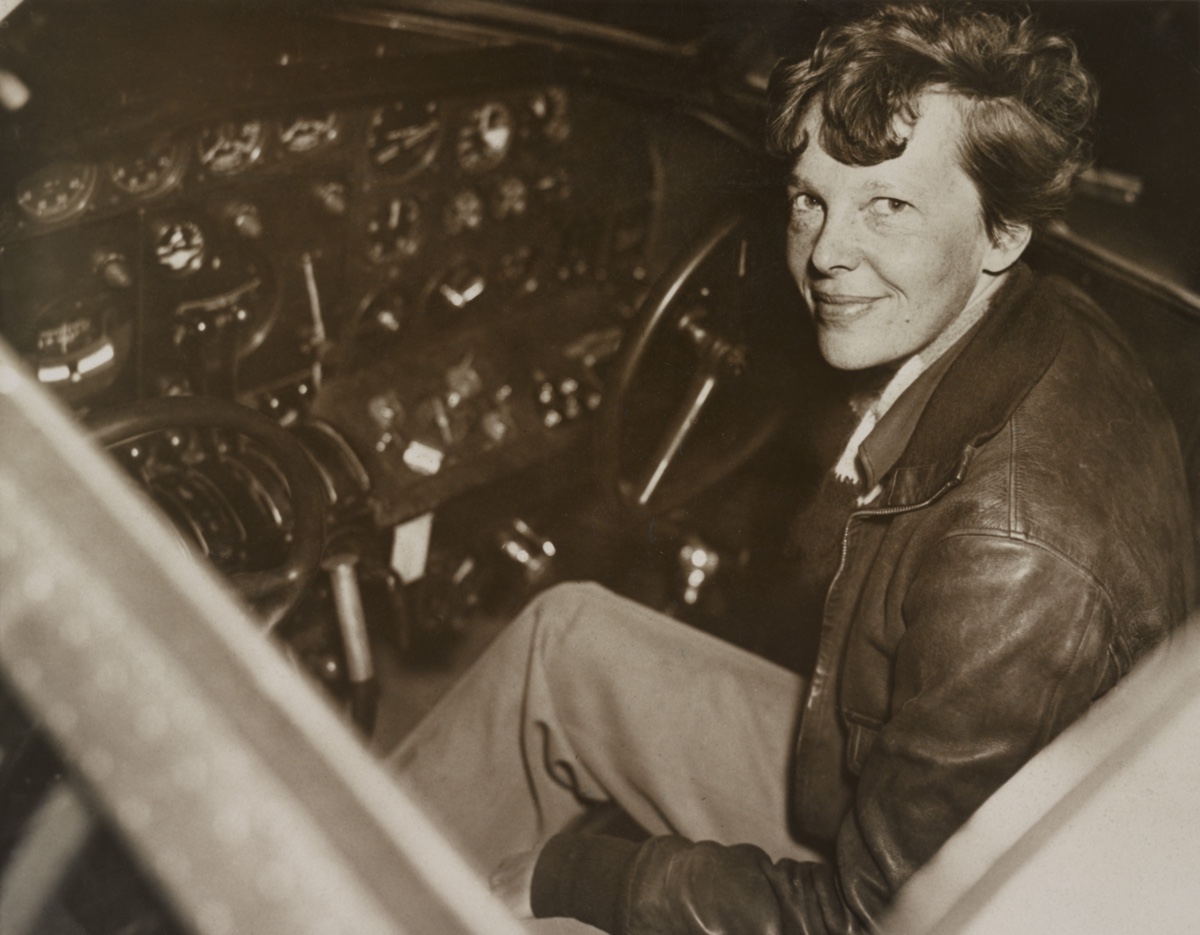Bone-Sniffing Dog Detectives Join the Hunt for Amelia Earhart's Remains

A search party set sail for a remote Pacific island this weekend to look for clues about the fate of Amelia Earhart.
The American aviation pioneer disappeared 80 years ago during an attempt to fly around the world. In the latest National Geographic-sponsored expedition seeking Earhart’s remains, a group of forensic dogs will be brought to the island of Nikumaroro to sniff for human bones.
Earhart was already a famous aviator by the time she set off for her round-the-world flight in June 1937. Among her many other records, she was the first woman, and second person after Charles Lindbergh, to fly solo across the Atlantic Ocean in 1932. Her flight around the world wouldn’t have been the first, but it would have been the longest, following a 29,000-mile (47,000 kilometers) route close to the equator. [In Photos: Searching for Aviator Amelia Earhart]
With her navigator Fred Noonan, Earhart departed east of Oakland, California, in a modified twin-engine Lockheed Electra 10E. They were last seen on July 2, 1937, in Lae, New Guinea, as they ventured toward Howland Island in one of the last legs of the journey.
The U.S. Coast Guard cutter Itasca had been waiting at Howland Island to offer radio assistance and a smoke signal so that the flyers could better locate the mile-wide strip of land in the Pacific. But communication was spotty, and Earhart’s last transmissions indicate she thought she was near her destination but couldn't find it and was running out of fuel.
Theories abound about what happened next, ranging from the credible to the imaginative. The credible theories have her crashing into the ocean, while the imaginative ones claim Earhart was really a spy and was captured by the Japanese, or she ran off to New Jersey to live under a secret identity.
The new expedition will investigate the Nikumaroro theory, of which claims that Earhart and Noonan landed on the uninhabited island of Nikumaroro (now part of the nation Kiribati) when they couldn't find Howland and died there as castaways. In 1940, a British officer found 13 human bones on the island and sent them to Fiji, where they were measured and unfortunately lost. Some believe these remains could have been Earhart's, and that the rest of her bones could still be buried on the island, or have been scattered about by coconut crabs and other creatures on the island.
Sign up for the Live Science daily newsletter now
Get the world’s most fascinating discoveries delivered straight to your inbox.
The search is affiliated with the International Group for Historic Aircraft Recovery, or TIGHAR, which has mounted a dozen expeditions in the last three decades looking for evidence to support the Nikumaroro theory. TIGHAR will support the group with underwater remotely operated vehicles (ROVs) to search for the possible wreckage of Earhart’s plane. The National Geographic Society's archaeologist-in-residence, Fred Hiebert, is joining the expedition, too, and the organization is sponsoring the four dogs from the Institute for Canine Forensics.
The border collies (named Berkeley, Piper, Marcy and Kayle) are specially trained to look for historic and prehistoric human remains. "No other technology is more sophisticated than the dogs," Hiebert told National Geographic." They have a higher rate of success identifying things than ground-penetrating radar."
But the environment of the island, which is hot, humid and full of thick vegetation, could prove a challenge.
"We've deployed lots of different technologies at Nikumaroro over the years, some of which worked well … and some of which were utterly defeated by the Island Goddess Nei Manganibuka," TIGHAR’s dive team leader Andrew McKenna wrote in an expedition update. "I'm hoping the dogs will prove effective, at least they don't have motherboards to fail."
Original article on Live Science.











